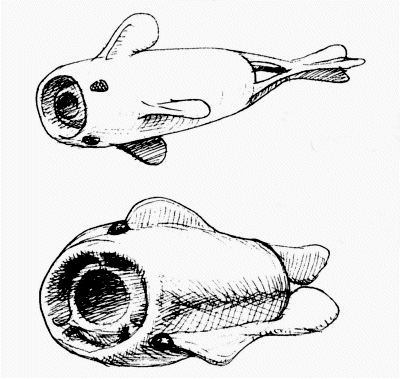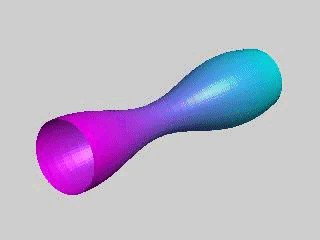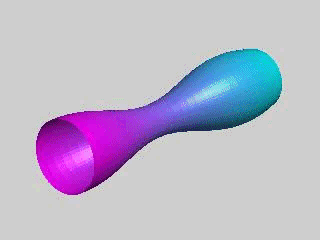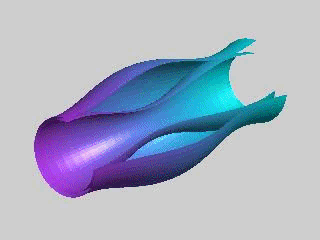Swimming with tubes

|
AYULF ("As Yet Unnamed Life Form")
Here is a species belonging to a clade propelled by concentric peristaltic tubes. The group is ill-defined, and it is not even certain whether the three-axial and four-axial forms are monophyletic or polyphyletic! The matter is best left to cladophiles. Here, we are more interested in their biomechanics. First of all, start with the lower sketch: there are tubes inside the animal, attached to the outer hull of the animal by three (or four) phrenulae. These are not very long however, so for most of the length of the animal the tube floats freely in the hull. Some animals have several such concentric tubes, as we shall see. They move by pushing water backwards by waves of narrowing of the tubes. As the outer hull is usually immobile, the mode of propulsion can remain invisible: all the moving parts are inside.
|
|
One tube
Here just one tube is shown. A wave of expansion and narrowing travels backwards. Water goes in at the front, and comes out at the back. You can envisage gills and a filter apparatus somewhere, and you would have a swimming animal. A probably somewhat icky one, but an functional animal nonetheless.
|

|

|
Enclosed tube
Here you see what happens when you enclose the tube in a fixed hull: not only do we now have the propulsive effects of the inner tube, but the water trapped between the tube and the outer hull can only go backwards as well. Without the hull, it could go sideways as well, making it less efficient. So energy is used more efficiently, as all effort is directed strictly backwards.
|
|
Multiple tubes
But if you enclose the tube in another moving tube, things get more exciting. Of course, you can enclose the ensemble in an outer fixed hull, combining the lot. There is probably not much sense in doing it with even more tubes, and there is also not much point in making the tube longer. At some point in the design, it becomes less efficient instead of more so.
|

|





